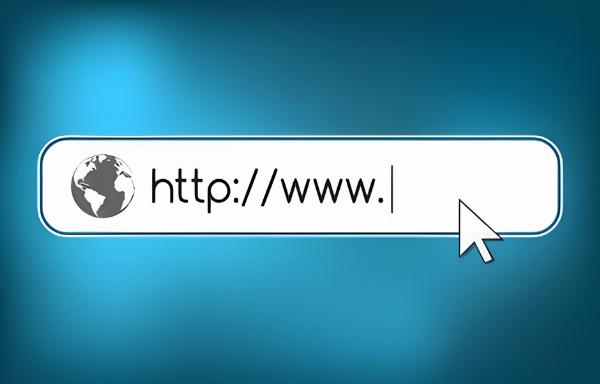What Is a URL? A Complete Guide to Website URLs

Strong 8k brings an ultra-HD IPTV experience to your living room and your pocket.
In the huge digital world of the internet, URLs are the unsung stars who help us find our way through the maze of websites with just a click. Have you ever considered what a URL is and how it works as the internet's address for every website? We don't think much about these seemingly ordinary lines of characters as we easily move from page to page. On the other hand, learning about the details and significance of URLs can help you appreciate the connected web that makes our online activities possible in a whole new way. In this complete guide, we will take you on a trip through the depths of cyberspace as we try to figure out what website URLs are all about.
What does a URL look like?
There are ten parts to a URL: the scheme, the subdomain, the top-level domain, the second-level domain, the subfolder, the parameter, the port, the path, the query, and the fragment. URLs don't have to have all of these parts at the same time, but they always have three or more.
Structure of URLs
1. Scheme
The scheme, which is another word for protocol, tells web hosts which protocol to use when they visit a page on your site.
For the most part, HTTPS, which stands for Hypertext Transfer Protocol Secure, is used these days. Because of this, any information you put on the page, like your passwords or credit card numbers, will be encrypted, and cybercriminals will not be able to see it. If you use this security protocol, your website's visitors will be safer, and Google will rank your site higher. That's why any technical SEO guide needs to tell you how to set up SSL.
You may also see mailto:// and ftp://. Mailto:// will open your computer's usual email service provider and let you write an email to the address you entered in the URL. FTP:// is a standard protocol for sending files from a client computer to a server computer over a network.
2. The subdomain
If your website is like a house, your subdomains are like different places in your house. When a URL has a subdomain, it tells the web browser which page of your website to show. So, subdomains like "blog" or "offers" will lead to your website's blog page or offers page, respectively.
Subdomains also organize your website's main content into groups. This lets Google and your users know that your site has more than just a homepage.
3. Second-level Domain
The name of your site is its second-level domain (SLD). People will know they're on the page of a certain brand. Anyone who goes to "mlb.com" knows they're on the website for Major League Baseball; they don't need any other details.
4. The top-level domain
The top-level domain (TLD) tells the internet what company your business is registered as.
Many American businesses register with a top-level domain of ".com," for example, because ".com" is for companies in the United States. Many American schools and universities register with a top-level domain of ".edu" because it is meant for academic institutions in the US.
5. Subdirectory
People and web robots can both use subdirectories, which are also called subfolders, to find the exact part of a webpage they are on.
One of your website's URLs might be "https://shop.yourstore.com/hats" if you run an online store that sells t-shirts, hats, and mugs. Keep in mind that the subdomain is "shop" and the subdirectory is "hats." That means this URL would take you to the "Hats" page inside the "Shop" page. This page also has subfolders for T-shirts and mugs.
6. Port
The port number tells the computer where to connect and sends data to a certain service. Fewer or more computers will use the same port number. This number is always linked to a host network address, like an IP address. For example, port 80 is used to identify an HTTP server, while port 443 is used to identify an HTTPS server.
7. Path
The path tells the program where to find the file or resource that the user wants to use. The path given in the case below is the article "parth-url."
8. Query
Have you ever seen a question mark in some URLs when Google shows search results? That question mark before a query string tells the computer to run a certain query. A query string tells the website's database what information is being asked for. The next part will be about conditions.
9. The parameters
These are the numbers that are being asked for during a search. The parameter can be a website-findable number, a protected value, a search term, or other data. In URL parameters, an equal sign (=) separates a key and a value. An ampersand (&) separates each parameter in a URL that can have more than one.
With UTM settings, you can keep track of your advertising or marketing goals. By adding these to the end of URLs, you can see how people are getting to your site and if they're interacting with the marketing effort that goes with it.
10. Fragments
A hash (#) typically denotes fragments, which are parts of URLs that are omittable. They point to a certain place on the page, like an ID or name property, but they can also lead to other resources, like a footer or sidebar.
Describe the different kinds of URLs.
Most of the time, absolute and relative URLs are used.
There is everything in an absolute URL, from the protocol to the way to resources or parameters. A relative URL, on the other hand, only has access to the resources.
Here are some other types of standard resource locators based on their purpose:
Canonical links: If a site has duplicate information, the owner can use it. You can tell search engines which URL to crawl and index by making one of them the "canonical" URL.
Callback URL: When users finish a task on an outside system, they go back to their home location.
URL vanity: They are short web names that are easy to remember. They are also called custom short URLs. A vanity URL is often a short version of a larger URL. Site owners can create a vanity URL by using a website URL shortener tool like Bitly, Short.io, or TinyURL.
How to make sure your URLs work and are easy for people to use?
URLs are important for two reasons: first, they help us find and organize things on the internet; second, they tell us how a website's URLs are structured. A good URL layout is also important for search engine optimization, making it easy for people to find their way around your site.
A well-structured URL makes it easy for people to move around on a website. This page's path is /en/domain/what-is-an-url. This page is in the /en subfolder because it's in English, and it's in the /domain subfolder because it has to do with domains. Our other blog posts about the same name are in the same subfolders. A good way to organize your website is to give each page a URL that makes sense.
URLs are one of the things that search engines use to decide how to rank websites based on how well they work. You'll move up in search engine results pages (SERPs) if your URLs are better, which means they are more useful and to the point. Ensure your URLs are as good as possible to improve your website's SEO!
People often mess up their URLs by making them too long, using words or sentences that are too hard to remember, or adding special characters that can confuse browsers (or, worse, search engines).
Since your domain name is part of your URLs, you should first make sure you have a good one. You can focus on making your website by going through each URL as soon as you have that.
Here are some tips for making URLs that work and are easy for people to use:
• Set up make-sense URLs, and use subfolders to organize your material. There are several ways to do this. For example, you could put all your blog posts at yourwebsite.com/blog and all your goods at yourwebsite.com/product. A URL structure can be used in the same way as a file browser on your computer. The blog folder will hold all the blog posts, and the product folURLill hold all the product pages.
• Make sure to make your URLs shorter. A URL that has few characters is easy to remember and type in.
• When you make your URL, try not to use any special letters. If you need to use special characters in your URL, stick to plain ones that will be clear to people.
• Do not use spaces, but use hyphens (-). In contrast to dashes (_), they are easy for both people and search engines to read.
• Protect your URLs for the future. If you're writing a piece about this year's digital marketing trends, don't put the year in the URL. Soon, your URL will no longer work. Use something like /digital-marketing-trends instead. That way, you can change the piece every year without having to change the URL.
These simple tips will help you make URLs that work, are easy for people to use, and are, most importantly, simple for everyone to remember!
Conclusion
Knowing what a URL is and how it works to use the internet efficiently is important. The URL of a website is its unique address, which makes it easy for people to get to certain pages and tools. People can better understand how websites are arranged and linked by learning about the different parts of a URL, like the protocol, domain name, and path. Also, knowing how to spot secure URLs that use HTTPS security can help keep private data safe online. Overall, understanding URLs gives people the power to browse the web quickly and safely. Take the time to look at different URLs and learn more about technology today!
Note: IndiBlogHub features both user-submitted and editorial content. We do not verify third-party contributions. Read our Disclaimer and Privacy Policyfor details.







